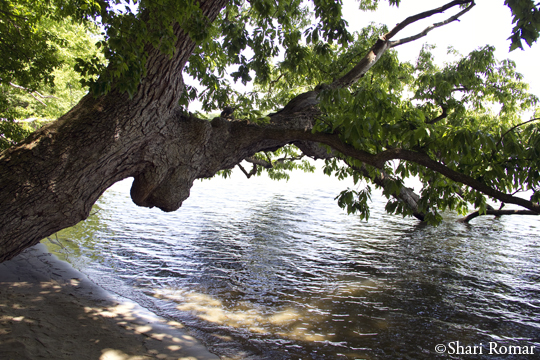Salt Marsh Safari
While it may not be as exotic as an outback excursion to Kenya or similar far-off land, the salt marsh is an ecosystem just as robust.
Salt marshes abound in the NYC area, but a recent trip to see family led us to those hugging the Chesapeake Bay. And the perfect place to marvel at the marsh ecosystem is the Smithsonian Environmental Research Center (SERC) in Edgewater, Maryland.
Unbeknownst to us, there was a family public event earlier that day but thankfully we caught the tail end and enjoyed close up views of the Bay's most famous resident -- the Blue Crab (Callinectes sapidus), both the adult form with its colorful but menacing claws, and far less painful-looking "baby" stage measuring about one inch.
Hardly an expert on the Chesapeake coastline, I always find it interesting how wooded areas brush up against the waterways or marshes without much transitionary landscapes like beaches or bogs. You have the forest, then BOOM! the water, sometimes with bits of marsh in between.
The forest part was rich with trees and bird song including our first glimpse of what might have been a Yellow-throated Vireo (Vireo flavifrons) (sorry, no photo). The Six-spotted Tiger Beetle (Cicindela sexgutata) cavorted in dappled sunlight and two Broad-headed Skinks (Eumeces laticeps) tried to hide on a Tulip Tree trunk (Liriodendron tulipifera).
The section of salt marsh we visited perfectly demonstrated why these vital areas are called nurseries. Tide was out but quickly returning, and little fish bubbled in the waters. Dragonflies found nifty perches on new and old grasses. And we were treated to the aerial dexterity of a Blue-gray Gnatcatcher (Polioptila caerulea) looking for...well gnats!
Osprey (Pandion haliaetus) were ever-present along with Turkey Vultures (Cathartes aura). An immature Bald Eagle (Haliaeetus leucocephalus) fly-by rounded out the complete salt marsh life cycle experience.















